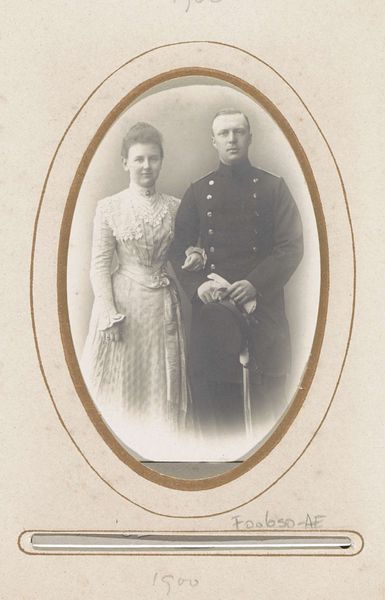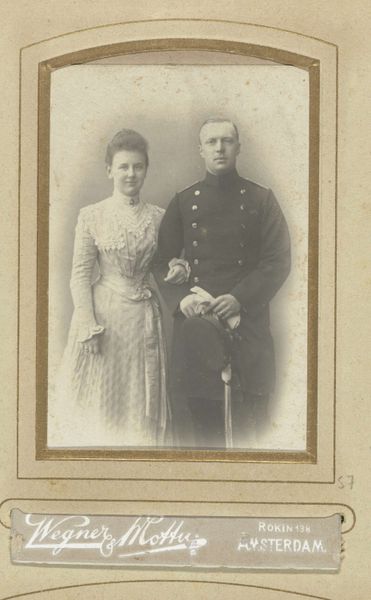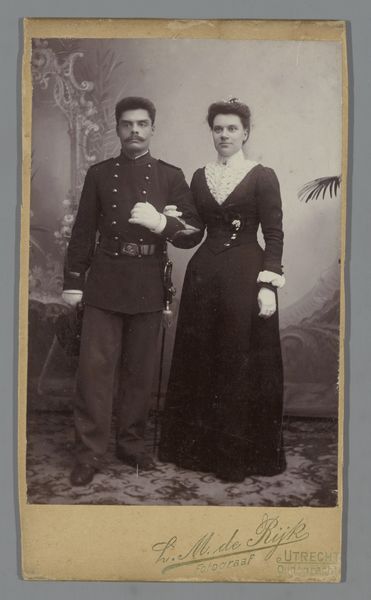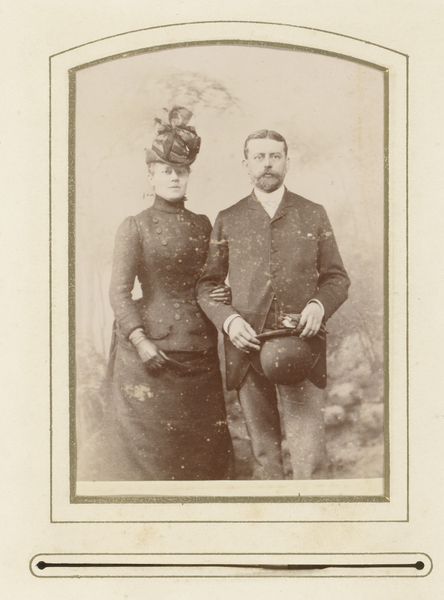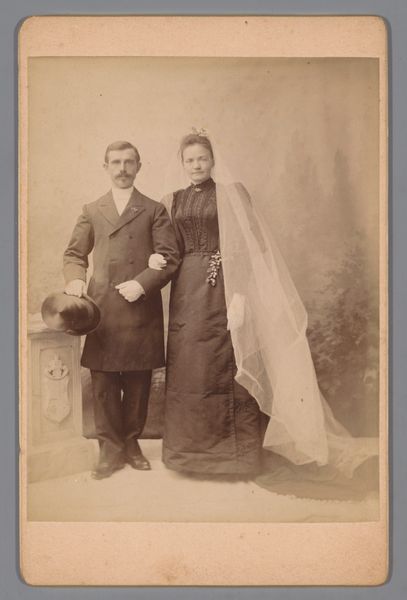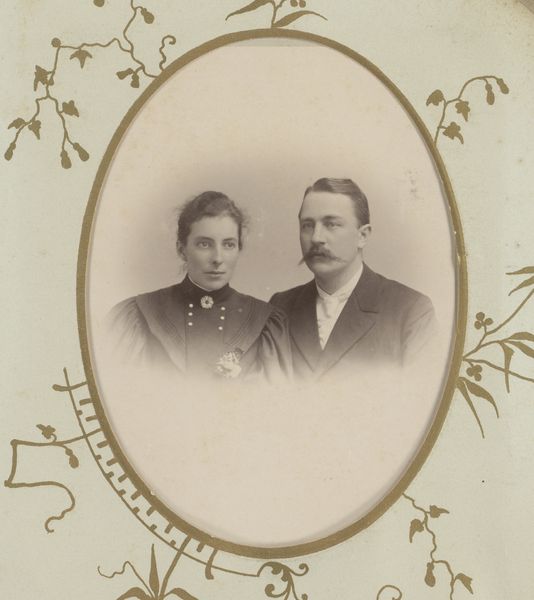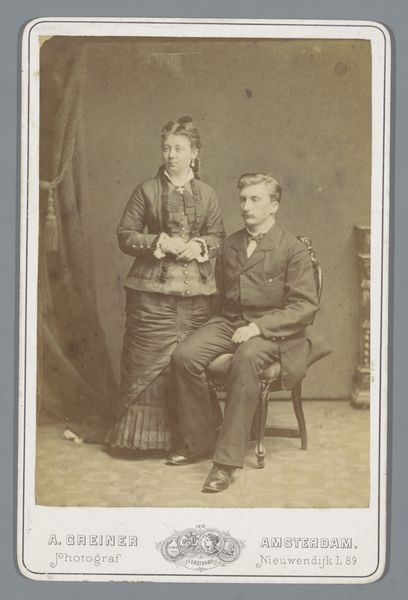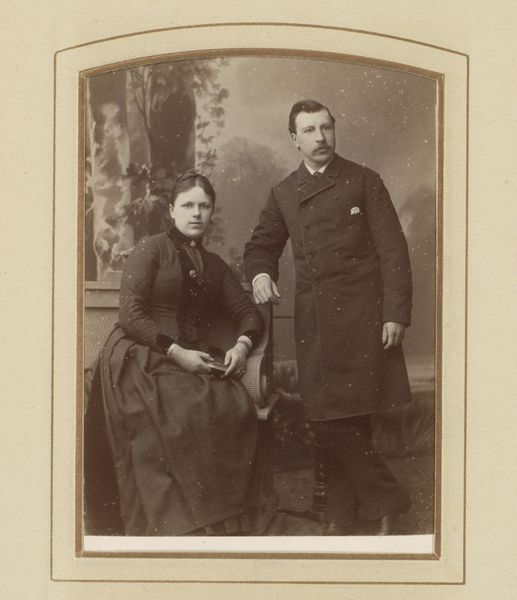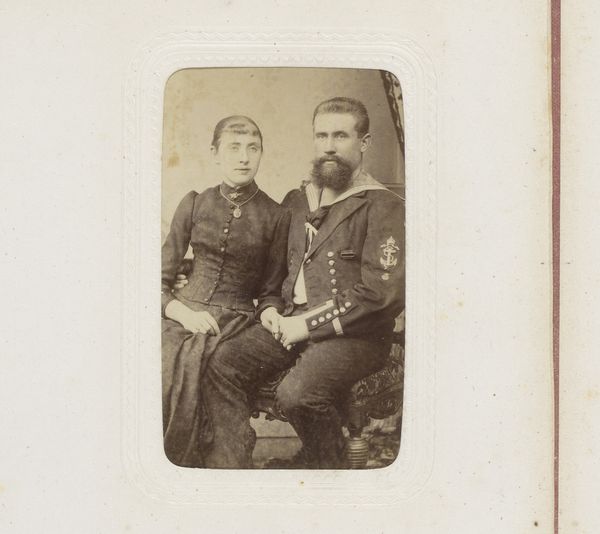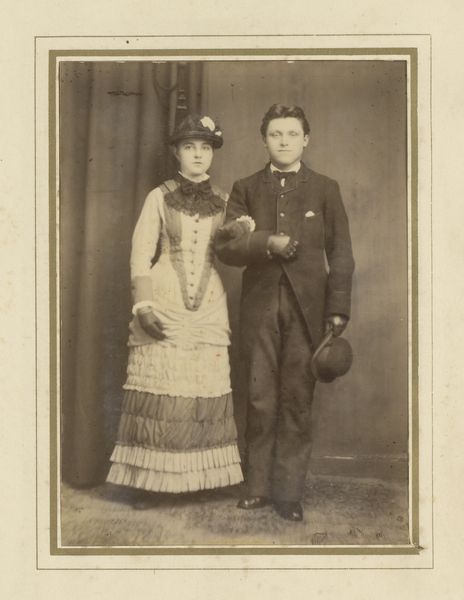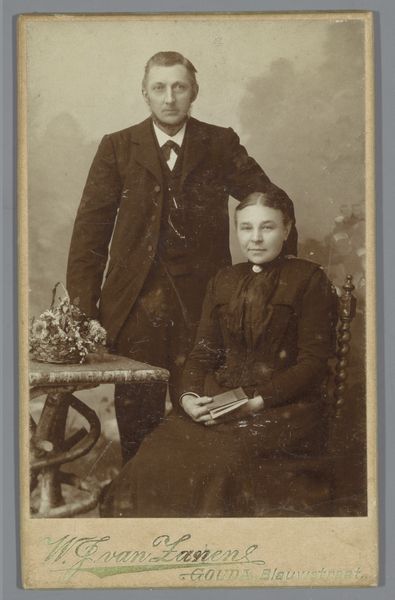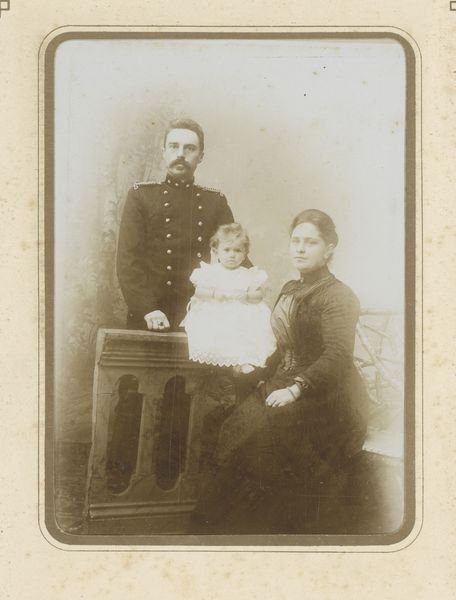
Dimensions: height 123 mm, width 89 mm
Copyright: Rijks Museum: Open Domain
Curator: Looking at this gelatin silver print from sometime between 1880 and 1920, we see a studio portrait of a man and a woman, believed to be by H. de Graaf. Editor: My first thought is somber. They both look incredibly serious, almost burdened, despite the implied formality of the occasion. The monochrome enhances this feeling. Curator: It’s interesting to consider portraiture's role in solidifying social status during this period. A military uniform was not just clothing; it signified power, authority, and adherence to specific social and political ideals. And what about the woman by his side, seemingly subsumed into his narrative? Editor: Exactly! How does this image reinforce or challenge traditional gender roles? She is physically connected to him, yes, but there's a visible emotional distance. The gaze she gives is introspective. It suggests inner resilience maybe even quiet resistance, amidst societal expectations. Curator: I agree. The very act of posing together speaks to the societal pressures surrounding marriage and partnership. Photographs, in that moment, are powerful social documents. Consider the implications of making their union, whether from affection or strategic alliance, extremely public. How the rise of photographic studios also gave many new professional opportunities to both women and people from marginalized social positions. Editor: It makes you wonder about their relationship outside the confines of this formal pose. The rigidness in their posture clashes so violently with the soft lighting. And does his hand gesture holding a sheathed sword say much about expected patriarchal protection? Curator: This visual rhetoric reveals deep societal constructs. To interpret the image, one has to dig at its layered context—the growth of nationalism, increasing social mobility and change—all of these aspects are frozen in one single still life, carefully set to convey power, aspiration and decorum. Editor: Agreed. These studio portraits were so often about constructing identity within those frameworks, or maybe subtly subverting them. What can this portrait tell us about the untold story of her personal experience? Curator: I think delving into these nuances allows us to really comprehend what an photograph like "Portret van een man en vrouw" says, in particular as a historical witness, however mute, to complex intersectional identities and social negotiations of that time. Editor: Right. It is much more than only a simple image of two people. It really prompts us to investigate into those undercurrents of their life during those defining historical shifts.
Comments
No comments
Be the first to comment and join the conversation on the ultimate creative platform.
